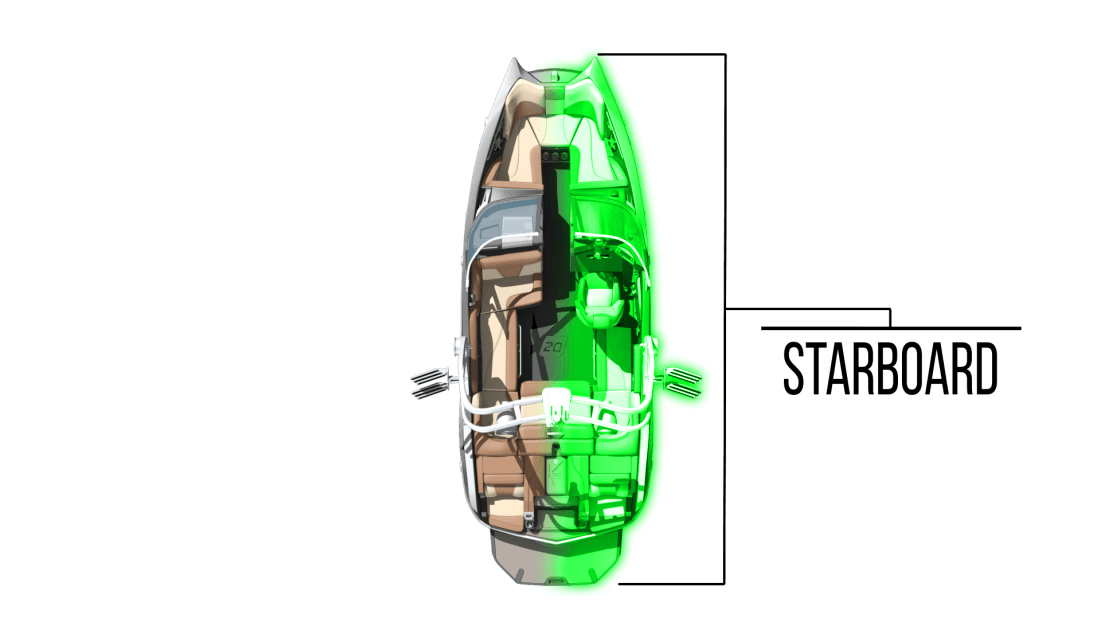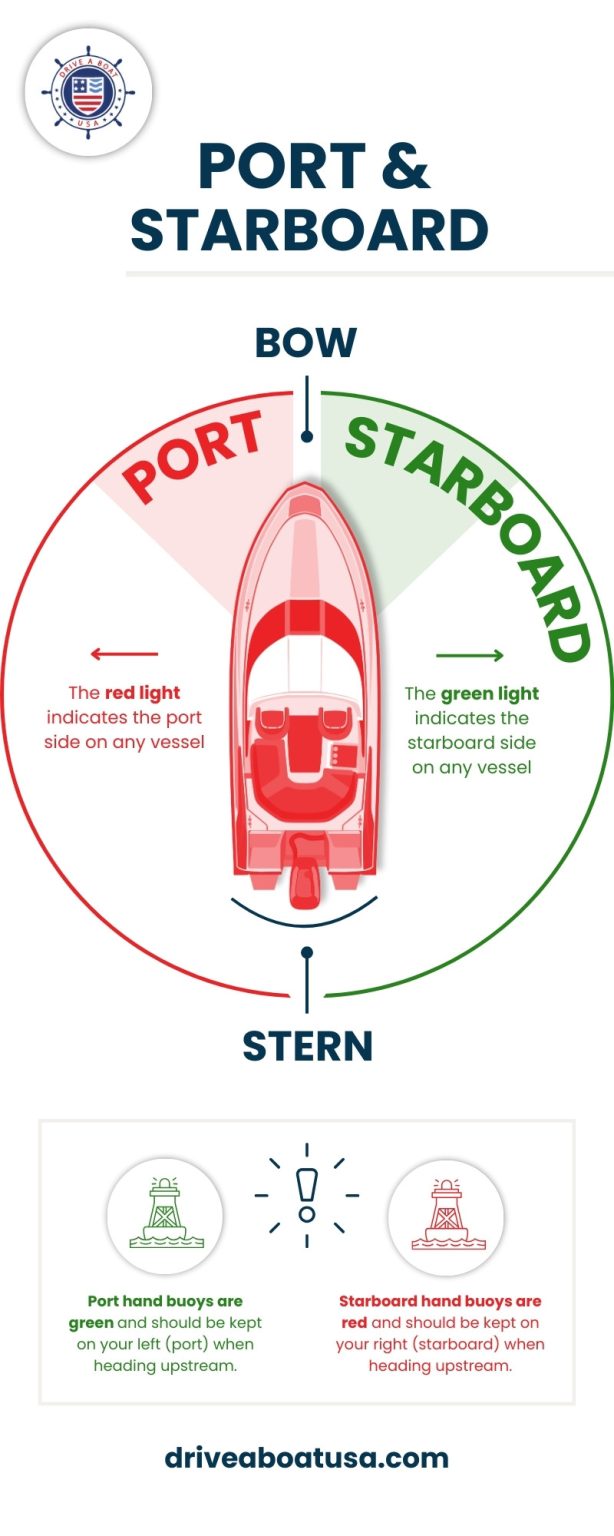What Side Of The Boat Is Starboard? Your Ultimate Guide To Nautical Navigation
Ever wondered what side of the boat is starboard? You’re not alone. Whether you're a newbie sailor or just curious about maritime lingo, understanding the basics of nautical terms is key to navigating the waters safely and confidently. So, buckle up, because we’re diving deep into the world of boats, sides, and all things sea-worthy.
Picture this: you're on a boat, the wind’s in your hair, and someone yells, "Move to starboard!" You’re probably thinking, "Wait, which side is that?" Don’t worry; even seasoned sailors had to learn this stuff at some point. In this guide, we’ll break it down so you can impress your friends (and maybe even your captain).
Let’s face it—nautical terms can sound like a foreign language at first. But once you get the hang of it, you’ll realize it’s not as complicated as it seems. So, whether you're planning a weekend cruise or just want to sound smarter at parties, stick around. We’ve got you covered.
- Nebelgefahr Wo Pltzlich Nebel Auftritt Amp Was Tun
- Ramadan In Berlin 2025 Iftar Suhoor Zeiten Alles Was Sie Wissen Mssen
Why Does Starboard Matter? Understanding Its Importance
Let’s start with the basics: what exactly is starboard, and why does it matter? Starboard refers to the right-hand side of a boat when you're facing the front (or bow). It’s more than just a fancy word—it’s a crucial part of maritime navigation. Knowing your starboard from your port (the left side) can mean the difference between smooth sailing and a serious collision.
In the world of boating, communication is key. Imagine being on a crowded waterway where boats are zipping around in all directions. If everyone uses the same terminology, it reduces confusion and keeps everyone safe. So, next time someone says "starboard," you’ll know exactly what they mean.
Starboard’s Historical Roots: A Brief Backstory
But why is it called starboard anyway? Well, it dates back to the days of old sailing ships. Back then, boats had a large steering oar on the right side, which was called the "steerboard." Over time, the term evolved into "starboard." Cool, right?
Here’s a fun fact: the left side was originally called "larboard," but sailors found it too easy to confuse with "starboard." So, they switched it to "port," which comes from the side of the ship that faced the port when docking. History lesson over—let’s move on!
Port vs. Starboard: Breaking Down the Basics
Now that we’ve covered what starboard means, let’s talk about its counterpart—port. Simply put, port is the left-hand side of the boat when you're facing the bow. Together, starboard and port form the foundation of nautical navigation. Here’s a quick breakdown:
- Starboard: Right side of the boat when facing the bow.
- Port: Left side of the boat when facing the bow.
- Why It Matters: These terms help sailors communicate clearly and avoid accidents on the water.
Remember, the key is consistency. If everyone uses the same terms, it makes life a lot easier for everyone involved. Plus, it sounds way cooler than saying "left" and "right," don’t you think?
How to Remember Port and Starboard Easily
Let’s face it—remembering which side is which can be tricky at first. But don’t worry; there are plenty of tricks to help you out. Here are a few:
- Red and Green Lights: Boats have colored lights to help you remember. Red lights are on the port side, and green lights are on the starboard side. Just think "red wine on the left" to keep it straight.
- The Letter Trick: The word "port" has four letters, just like the word "left." Easy peasy.
- Visual Cues: If you’re on a boat, take a moment to orient yourself. Look at the bow and mentally label each side. It’ll become second nature in no time.
By the way, these tricks aren’t just for beginners. Even experienced sailors use them to stay sharp. So, don’t feel bad if you need a little help at first.
Common Misconceptions About Starboard
There are a few myths floating around about starboard that we need to clear up. For starters, some people think starboard refers to the back of the boat. Nope! That’s called the stern. Others believe it’s only used for big ships. Wrong again! Starboard applies to all types of vessels, from tiny dinghies to massive cruise liners.
Another common misconception is that starboard is interchangeable with "right." While it technically means the same thing, using the correct nautical term is important for clear communication. Think of it like speaking a different language—it’s all about precision.
Why Clear Communication Matters on the Water
Imagine being in the middle of the ocean with no land in sight. Now imagine someone giving you directions using vague terms like "go that way" or "turn over there." Sounds pretty confusing, right? That’s why nautical terms like starboard and port exist—to eliminate ambiguity and keep everyone on the same page.
Plus, if something goes wrong, being able to communicate clearly can save lives. Whether it’s calling for help or coordinating with other boats, knowing the lingo is essential.
Starboard in Action: Real-Life Scenarios
Let’s look at some real-life situations where understanding starboard comes in handy. Say you’re on a sailboat and the wind shifts suddenly. Your captain might yell, "Tack to starboard!" This means you need to adjust the sails and steer the boat to the right. Without knowing what starboard means, you might make a costly mistake.
Or consider this scenario: you’re navigating through a narrow channel, and another boat is approaching. The rules of the road dictate that you should pass on the port side, leaving the starboard side clear. If you get it wrong, you could end up in a dangerous situation.
How Starboard Affects Boating Regulations
Did you know that international boating regulations are based on starboard and port? For example, Rule 10 of the International Regulations for Preventing Collisions at Sea (COLREGS) states that power-driven vessels should keep to the starboard side of narrow channels. These rules exist to maintain order and prevent accidents on the water.
So, whether you’re cruising down a river or crossing the Atlantic, knowing your starboard from your port is essential. It’s not just about terminology—it’s about safety.
Fun Facts About Starboard
Who says learning about starboard has to be boring? Here are a few fun facts to spice things up:
- Starboard is always the side of the boat that gets painted with anti-fouling paint. This helps prevent barnacles and other sea creatures from attaching themselves to the hull.
- In ancient times, sailors believed that the starboard side was luckier than the port side. Some even refused to dock on the port side for fear of bad omens.
- Modern yachts often have a starboard-side helm station, as it provides better visibility when docking.
See? Starboard isn’t just a nautical term—it’s a fascinating piece of maritime history.
Starboard in Pop Culture
Believe it or not, starboard has made its way into movies, books, and even music. Remember that scene in "Pirates of the Caribbean" where Jack Sparrow yells, "Starboard tack!"? Or how about the classic novel "Moby Dick," where starboard plays a key role in the plot? Even rock bands like Led Zeppelin have referenced starboard in their lyrics.
So, the next time you’re watching a movie or reading a book about the sea, pay attention to how starboard is used. You might be surprised at how often it pops up.
How to Use Starboard in Everyday Life
You don’t have to be a sailor to use starboard in your daily life. For example, if you’re giving someone directions, you could say, "Take a starboard turn at the next intersection." Or, if you’re explaining how to set up a tent, you might say, "The entrance should face starboard." It’s a fun way to spice up your vocabulary and impress your friends.
Of course, you might get some raised eyebrows if you start throwing around nautical terms all the time. But hey, who doesn’t love a little maritime flair?
Starboard Beyond the Sea
Believe it or not, starboard has applications beyond the world of boating. For example, aviation uses similar terminology to describe the sides of an aircraft. The right side is called the starboard side, while the left side is called the port side. Even space travel borrows from nautical traditions, with spacecraft using terms like "starboard" to describe their orientation.
So, whether you’re flying a plane, piloting a spaceship, or just navigating your way through life, starboard has a place in your vocabulary.
Conclusion: Mastering Starboard for Life
And there you have it—your ultimate guide to understanding what side of the boat is starboard. Whether you’re a seasoned sailor or just someone who loves learning new things, knowing your starboard from your port is a valuable skill. Not only does it make you sound smarter, but it also helps keep you safe on the water.
So, the next time someone asks, "What side of the boat is starboard?" you’ll be able to answer confidently. And who knows? You might even inspire others to learn more about the fascinating world of nautical navigation.
Now, it’s your turn. Leave a comment below and let us know what you think. Did we miss anything? Do you have any tips for remembering starboard? And don’t forget to share this article with your friends—spread the maritime knowledge far and wide!
Table of Contents
- Why Does Starboard Matter?
- Starboard’s Historical Roots
- Port vs. Starboard
- How to Remember Port and Starboard Easily
- Common Misconceptions About Starboard
- Starboard in Action
- How Starboard Affects Boating Regulations
- Fun Facts About Starboard
- Starboard in Pop Culture
- How to Use Starboard in Everyday Life
- Dubai Schokolade Der Hype Die Sorten Wo Du Sie Findest
- Guten Morgen Mein Schatz Romantische Bilder Sprche

Starboard side of a boat

Starboard side after Aluminum & Fiberglass Boat Repairs

Port and Starboard Side and Lights Explained